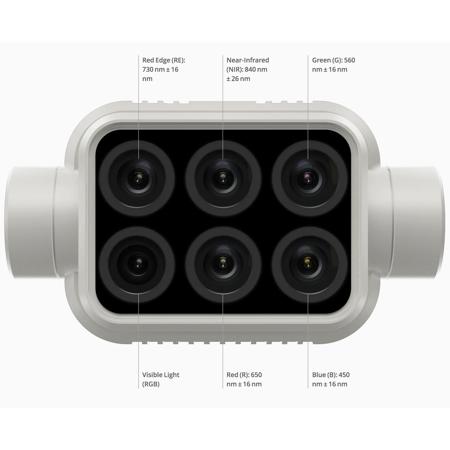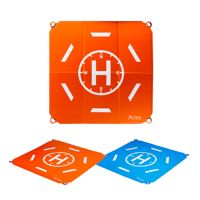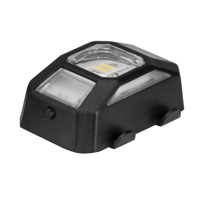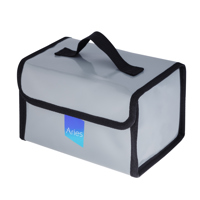
Picture does not represent the actual item
See what's in the box
This item is no longer available.
Review Summary
Extend coverage on pre-owned products after the retailer warranty ends and protect photo & video gear from accidental damage with Adorama Protect.
If we can’t fix it, we’ll replace it at no additional cost.
Coverage for pre-owned gear begins after the retailer warranty ends, plus accidental damage protection for photo/video gear that starts on day one.
Enjoy your gear without fear. We have you covered!
When regular use of your product over time results in mechanical or electrical failure.
We will never charge you a deductible after the purchase of a plan.
Our claims process is simple & easy and our customer service team is happy to help.
Adorama Protect powered by Extend is available for purchase to customers in the United States. Not available for International and U.S. territories purchases. Plans on pre-owned items do not cover pre-existing damages.
Browse our FAQ
350 mm
19685' (6000m)
6 m/s (automatic flight); 5 m/s (manual control)
3 m/s
31 mph (50 kph) (P-mode); 36 mph (58 kph) (A-mode)
Approx. 27 minutes
32 Degree to 104 Degree F (0 Degree to 40 Degree C)
2.4000 GHz to 2.4835 GHz (Europe, Japan, Korea)
5.725 GHz to 5.850 GHz (Other countries/regions)
2.4 GHz: < 20 dBm (CE / MIC / KCC)
5.8 GHz: < 26 dBm (FCC / SRRC / NCC)
RTK enabled and functioning properly:
Vertical: +/- 0.1 m;
Horizontal: +/- 0.1 m
RTK disabled:
Vertical: +/- 0.1 m (with vision positioning); +/- 0.5 m (with GNSS positioning)
Horizontal: +/- 0.3 m (with vision positioning); +/- 1.5 m (with GNSS positioning)
The relative positions of the centers of the six cameras' CMOS and the phase center of the onboard D-RTK antenna have been calibrated and are recorded in the EXIF data of each image.
3.27 lb (1.48kg)
GPS + BeiDou + Galileo (Asia); GPS + GLONASS + Galileo (other regions)
Frequency Used
GPS: L1/L2; GLONASS: L1/L2; BeiDou: B1/B2; Galileo: E1/E5
First-Fixed Time: < 50 s
Positioning Accuracy: Vertical 1.5 cm + 1 ppm (RMS); Horizontal 1 cm + 1 ppm (RMS).
1 ppm indicates error with a 1 mm increase over 1 km of movement.
Velocity Accuracy: 0.03 m/s
(H/18.9) cm/pixel, H indicates the aircraft altitude relative to the area mapped (unit: m)
Max operating area of approx. 0.47 km for a single flight at an altitude of 180 m, i.e., GSD is approx. 9.52 cm/pixel
Tilt: -90 Degree to +30 Degree
<= 31 mph (50 kph) at 6.6' (2 m) above ground with adequate lighting
0 - 33' (0 - 10 m)
0 - 33' (0 - 10 m)
2 - 98' (0.7 - 30 m)
Surfaces with clear patterns and adequate lighting (> 15 lux)
Six 1/2.9" CMOS, including one RGB sensor for visible light imaging and five monochrome sensors for multispectral imaging.
Each Sensor: Effective pixels 2.08 MP (2.12 MP in total)
Blue (B): 450 nm +/- 16 nm; Green (G): 560 nm +/- 16 nm; Red (R): 650 nm +/- 16 nm; Red edge (RE): 730 nm +/- 16 nm; Near-infrared (NIR): 840 nm +/- 26 nm
FOV (Field of View): 62.7 Degree
Focal Length: 5.74 mm (35 mm format equivalent: 40 mm), autofocus set at Infinite
Aperture: f/2.2
200 - 800
1 - 8x
1/100 - 1/20000 s (visible light imaging); 1/100 - 1/10000 s (multispectral imaging)
1600 x1300 (4:3.25)
JPEG (visible light imaging) + TIFF (multispectral imaging)
FAT32 (32 GB); exFAT (> 32 GB)
microSD with a minimum write speed of 15 MB/s. Max Capacity: 128 GB. Class 10 or UHS-1 rating required
0 Degree to 40 Degree C (32 Degree to 104 Degree F)
2.4000 GHz to 2.4835 GHz (Europe, Japan, Korea)
5.725 GHz to 5.850 GHz (Other countries/regions)
2.4 GHz: < 20 dBm (CE / MIC / KCC)
5.8 GHz: < 26 dBm (FCC / SRRC / NCC)
FCC / NCC: 4.3 mi (7 km)
CE / MIC / KCC / SRRC: 3.1 mi (5 km)(Unobstructed, free of interference)
6000 mAh LiPo 2S
1.2 A @ 7.4 V
Tablets and smartphones
32 Degree to 104 Degree F (0 Degree to 40 Degree C)
5870 mAh
15.2 V
LiPo 4S
89.2 Wh
16.5 oz (468g)
14 Degree to 104 Degree F (-10 Degree to 40 Degree C)
41 Degree to 104 Degree F (5 Degree to 40 Degree C)
160 W
17.5 V
41 Degree to 104 Degree F (5 Degree to 40 Degree C)
17.4 V
160 W



Plant Intelligence for Targeted Action
Gather precise plant-level data using the P4 Multispectral - a high-precision drone with a seamlessly integrated multispectral imaging system built for agriculture missions, environmental monitoring, and more.
Farm to Figures
Gain Immediate Insights into Plant Health
The P4 Multispectral consolidates the process of capturing data that gives insight into crop health and vegetation management. DJI has created this platform with the same powerful performance standards that DJI is known for, including 27 minutes max flight time and up to 7 km transmission range with the OcuSync system.
See Beneath the Surface
Agriculture imagery collection is now simpler and more efficient than ever before with a built-in stabilized imaging system that collects comprehensive data sets right out of the box. Access information collected by 1 RGB camera and a multispectral camera array with 5 cameras covering Blue, Green, Red, Red Edge, and Near Infrared bands - all at 2 MP with global shutter, on a 3-axis stabilized gimbal.
Integrated Spectral Sunlight Sensor for Accurate Results
An integrated spectral sunlight sensor on top of the drone captures solar irradiance, which maximizes accuracy and consistency of data collection through different times of day. When combined with post-processed data, this information helps to obtain the most accurate NDVI results.
Meaningful Data at Your Disposal
View Both RGB and NDVI Feeds
Simply having aerial imagery is not enough for ag professionals who want to know more. Switch between a preliminary Normalized Difference Vegetation Index (NDVI) analysis and the live RGB feed to immediately visualize where attention is needed, so targeted treatment decisions can be made quickly.
Centimeter-level Precision
Get real-time, accurate positioning data on images captured by all six cameras with DJI's TimeSync system, providing centimeter-level accurate measurements. The TimeSync system continually aligns the flight controller, RGB and NB cameras, and RTK module, fixing the positioning data to the center of the CMOS and ensuring each photo uses the most accurate metadata. All cameras go through a rigorous calibration process where radial and tangential lens distortions are measured. The distortion parameters gathered are saved into each image's metadata, letting post-processing software adjust uniquely for every user.
D-RTK 2 Mobile Station and NTRIP Compatibility
Enhance the accuracy of RTK positioning without internet connection by connecting the P4 Multispectral to the D-RTK 2 High Precision GNSS Mobile Station and NTRIP (Network Transport of RTCM via Internet Protocol), or store the satellite observation data to be used for Post Processed Kinematics (PPK).
The Beginning of Intelligent Agriculture Missions
Plan Flights
Plan flights, execute automated missions, and manage flight data using GS PRO - DJI's leading flight planning iOS app.
Capture Data
Collect multispectral images efficiently across a large area using the P4 Multispectral and gain an overview of problem areas.
Analyze Data
Easily access and process aerial data by applying plant-specific metrics and parameters to acquire the desired results on plant health.
Act on Data
Implement targeted treatments on areas that need attention based on accurate drone data.
Applications
Precision agriculture
Throughout all growing seasons, multispectral imagery can be helpful to ag professionals by providing information invisible to the human eye across the electromagnetic spectrum. Having access to this data and the subsequently obtained Vegetation Index data such as NDRE and NDVI, farmers can make timely, informed decisions on crop treatment, lowering costs, saving resources, and maximizing yields.
Environmental monitoring and inspection
Routine inspections and maintenance involving plants can be made smarter and more efficient when using the P4 Multispectral - leverage its actionable multispectral insights to monitor forest health, measure biomass, map shorelines, or manage riparian vegetation while protecting habitats or ecosystems, and much more.